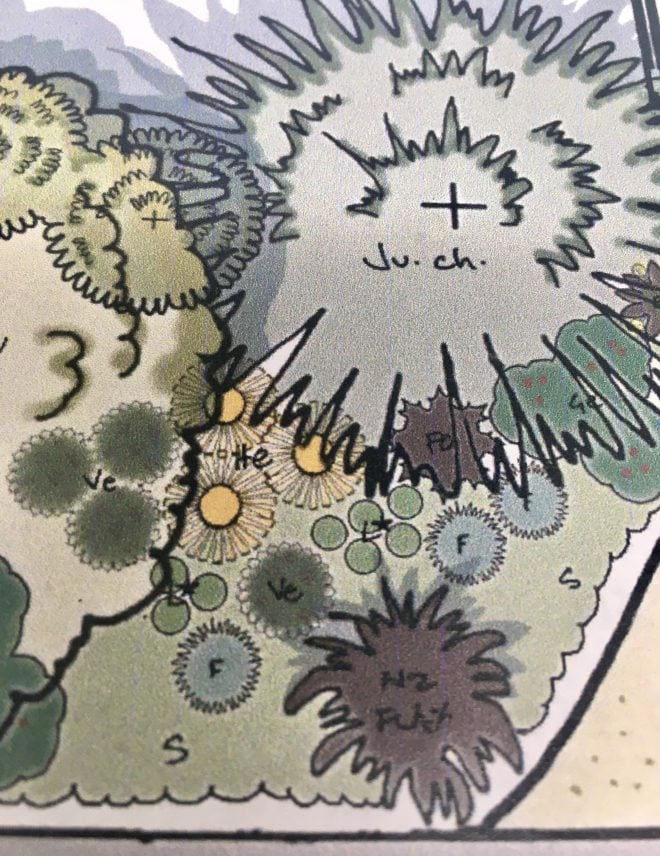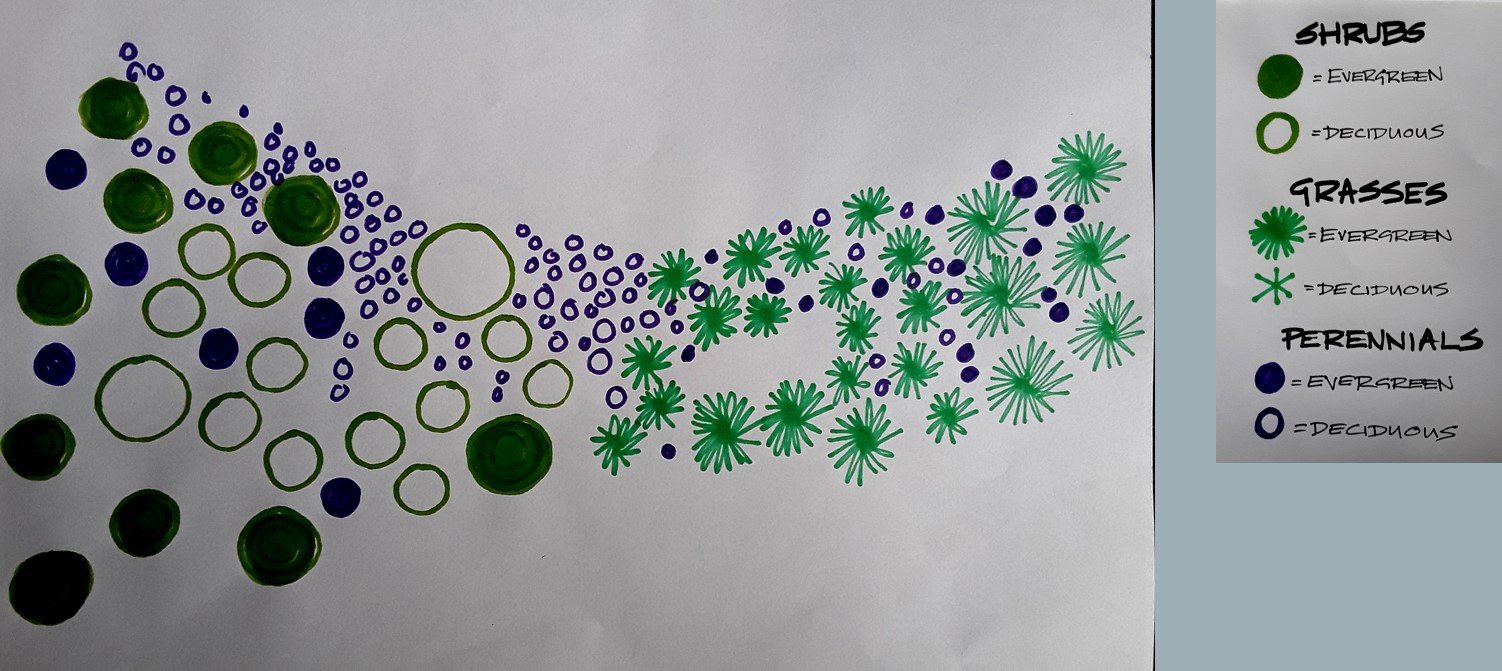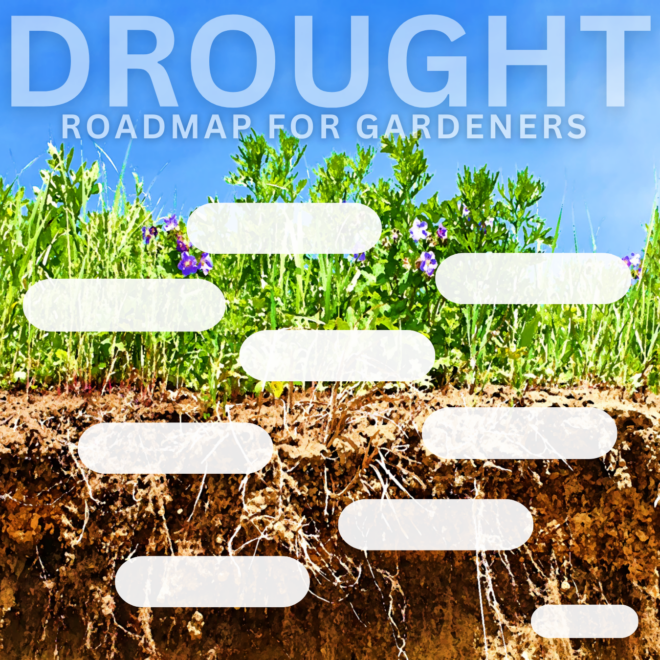
Drought Roadmap for Gardeners: Design
Contributor
DESIGN RESPONSES AND APPROACHES INTRODUCTION
The first thing to understand about designing landscapes and gardens is that they’re no longer truly in the natural environment. We designers, landscape architects, and gardeners are working in the built environment. Here, soils are more compacted, air is more polluted, the rain that comes can’t always sink into the ground fast enough before running off, and invasive plants and weeds are just waiting for an opportunity. The work we do affects where water flows. We design irrigation systems to apply water to supplement the moisture provided by the weather. We plan places to gather, to play, and to appreciate views. We walk on the soil, brush up against weeds. Sometimes we track through pathogens in the dirt that stuck to our shoes and change the places we go simply for having been there. While people are part of the natural world, our focus here is more on how we humans modify our outdoor surroundings and less about wildlands.
However naturalistic (or not) our gardens may seem, our designs and our decision making take a space and bends it away from what would have been if we humans weren’t here. Designing outdoor spaces can shape the earth, bring people together, create microclimates, and impact ecosystems both positively and negatively.

This section is all about design decisions and the first of three main categories of people-driven impacts: the design, installation, and maintenance of landscapes and gardens. If you ask a room of people which is the most important, you’ll probably get all three answers plus some folks who think you can’t have a successful garden without at least two of them. We at Pacific Horticulture argue that all three must work together for any garden to really succeed and be healthy and resilient, especially in the face of climate change. When drought is one of the challenges we’re facing, performing all three well is ever more important.
The problem with any landscape design is that it doesn’t exist until it is installed, and it won’t thrive without appropriate maintenance of that installed landscape. Poor installation will tarnish even the most well-considered design, and poor maintenance will undo the efforts of the finest designers and the best builders and installers. On the other side of this same coin, there is no amount of careful installation or informed maintenance that can save a bad design.

This section on design is not about style. Designing well to create spaces that are healthy, beautiful, and resilient when facing drought doesn’t mean that they’re formal or informal, curvilinear or rectilinear, contemporary or traditional, or anything at all about aesthetics other than healthy gardens are better looking than sickly or stressed gardens. This is about how these spaces can be designed so we don’t horticulturally shoot ourselves in the foot.
As you peruse these articles, you might notice an uncommon objective. In encouraging our gardens to grow more resilient, the focus must be on the health of the garden, not aesthetics or productivity or some other metric for success. We’re asking what can we do for the garden more than what will this garden do for us. Granted, we get a lot out of having beautiful, healthy outdoor spaces, but to have that, we must first design with the main goal of giving these spaces the best shot possible at healthy, resilient growth.
Sometimes in a design-driven pursuit of novelty, we can lose sight of horticultural soundness and climate change resilience. Our design solutions can steward the environment and heal it, or not. As we build out this section, we will look at some nuances of design work where the designer has a choice to make that may horticulturally benefit the landscape and the environment depending on which direction the design goes.
CLICK ON THE TOPICS IN THE IMAGE BELOW TO EXPLORE EACH SECTION










Responses